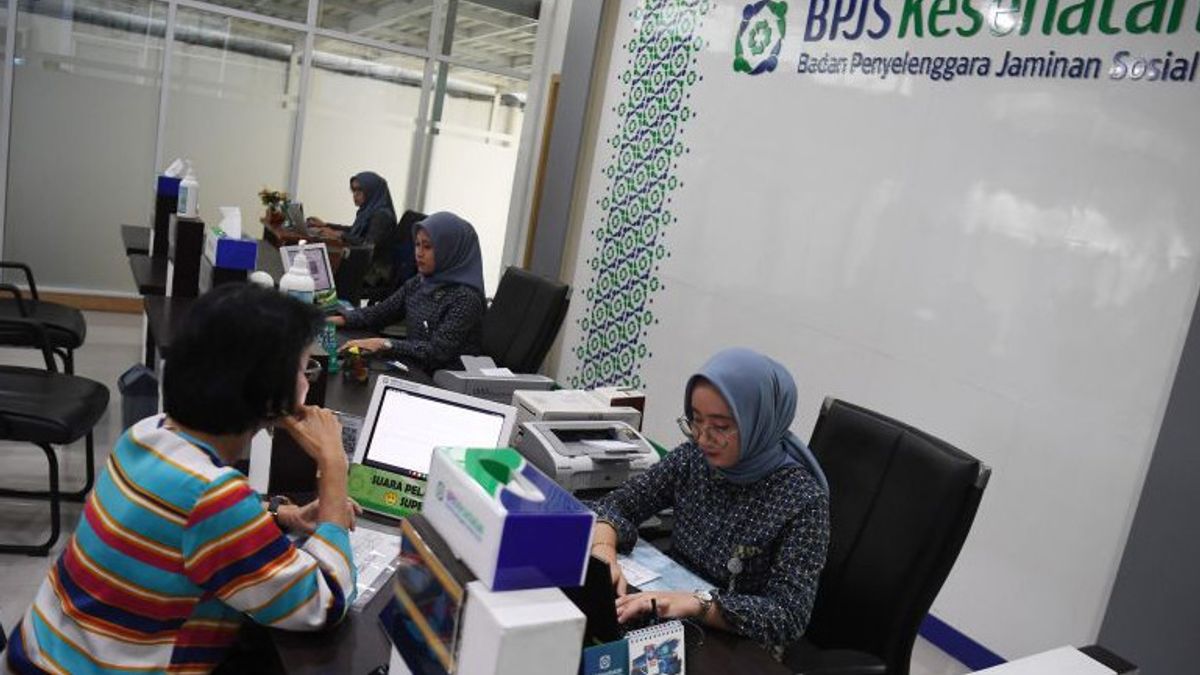JAKARTA - The Ministry of Health (Kemenkes) said that around 2,004 of the 3,057 hospitals were ready to be accompanied until June 30 in order to meet the 12 criteria for the Standard Inpatient Class (KRIS).
"Currently the target is 3,057 hospitals throughout Indonesia. Now, this is distributed to government-owned hospitals, belonging to regional centers, belonging to BPN, belonging to the TNI Poli, privately owned," said Head of the Center for Financing Policy and Decentralization of Health at the Ministry of Health Dr. Ahmad Irsan reported by ANTARA, Monday, June 3.
Ahmad said in the #79 Kemencast "How Is KRIS Implemented?" in Jakarta, Monday, as of May 20, there were 1,053 hospitals that were ready for the implementation of KRIS.
He explained, like the mandate of the Presidential Regulation, the KRIS aims to improve quality through standard stipulation, so that everyone in Indonesia, if they have a National Health Insurance (JKN), can access it.
Director of Health Services Referral to the Ministry of Health Yuli Astuti Saripawan said that so far, the determination of classes provides different facilities.
Yuli gave an example, the 3rd grade facilities in Jakarta and Eastern Indonesia are different, where in eastern Indonesia one room contains 12 mattresses and the bathroom is far away, while in Jakarta the room is equipped with a deep bathroom even though it is in grade 3.
"Well, these are the variations that we will standardize so that patients feel comfortable with the participation, they receive the same service," he said.
As for these criteria, he said, are components of buildings that do not have porosity or are not porous, because this can be a source of infection. According to him, the standard for buildings is the most important.
"Then there is also a ventilation problem. Now air ventilation. So we hope the sand room is delicious, comfortable. The air circulation is good like that. So to be healthy," he said.
He also mentioned lighting as important, so that patients are comfortable and medical personnel can take action smoothly. The availability of health workers, he said, is also important for the needs of patients.
"Furthermore, it hits the temperature. The room temperature. It's also arranged. So don't come up later. It's all crowded later. Or even some places to take off their clothes," he said.
SEE ALSO:
Yuli said that the division of rooms is also needed, such as according to the age category, gender, infectious disease or not.
"Then the others also have problems with room density. The maximum one room is only four beds. So if it's less than four east, just go," he said.
According to Yuli, the heaviest criterion is the internal bathroom. According to him, it is important that patients more easily access it. He gave an example, it is impractical for patients to go to the outdoor bathroom while carrying IVs.
"Well, the bathroom inside is also arranged. There are people who, for example, are special needs. The bathroom door can enter a wheelchair, and so on," he explained.
The last thing, he said, was the oxygen outlet.
Yuli said these criteria are significant changes in health services and are not easy to implement, but he hopes that assistance from the Ministry of Health for hospitals in collaboration with BPJS can help meet these standards for the convenience of patients.
The English, Chinese, Japanese, Arabic, and French versions are automatically generated by the AI. So there may still be inaccuracies in translating, please always see Indonesian as our main language. (system supported by DigitalSiber.id)
















